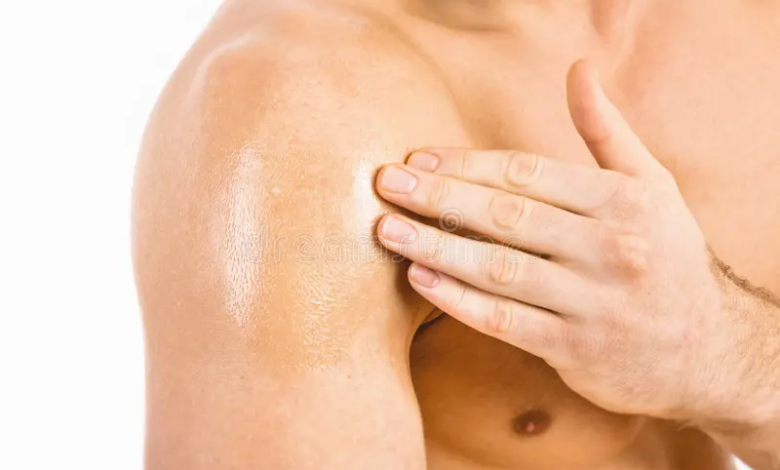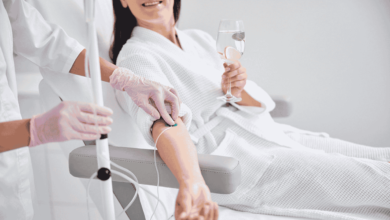How to Safely Use Testosterone Gel for Hormonal Balance

Hormonal balance is critical for overall health and well-being. For men and women alike, balanced hormone levels regulate everything from energy and mood to metabolism and reproductive functions. Testosterone, the primary male sex hormone, plays a vital role in these processes, particularly in men, but it also has important functions in women. When testosterone levels become imbalanced, symptoms such as fatigue, mood swings, low libido, and muscle loss can occur. One of the effective treatments for testosterone deficiency or imbalance is testosterone gel.
Testosterone gel, a topical form of testosterone replacement therapy (TRT), is often prescribed to help individuals restore hormonal balance. But how can you use testosterone gel safely and effectively? This comprehensive guide will explore what testosterone gel is, how it works, its benefits, potential risks, and how to use it properly for optimal results.
What Is Testosterone and Why Is It Important?
Testosterone is a hormone produced primarily in the testicles in men and in smaller amounts in the ovaries in women. It is responsible for many essential bodily functions, such as:
- Sexual health and libido: Testosterone plays a key role in regulating sex drive (libido) in both men and women.
- Muscle and bone health: It contributes to muscle mass, strength, and bone density.
- Mood and energy levels: Testosterone helps regulate mood, and a deficiency can lead to fatigue, irritability, and even depression.
- Reproductive health: It is essential for sperm production in men and supports reproductive functions in women.
As men age, testosterone levels naturally decline, a condition known as andropause. Testosterone levels also fluctuate due to lifestyle, medical conditions, or environmental factors. Women may also experience decreased testosterone levels, particularly during menopause. Maintaining adequate testosterone levels is vital for preventing symptoms such as low energy, reduced muscle mass, and a decrease in libido.
What Is Testosterone Gel?
Testosterone gel is a form of testosterone replacement therapy (TRT) that is applied directly to the skin. It contains synthetic testosterone, which is absorbed through the skin into the bloodstream. Testosterone gel is used primarily by men who have low or no testosterone production due to hypogonadism or andropause. In some cases, it is prescribed to women with low testosterone levels, though its use in women is more limited.
Testosterone gel comes in different concentrations and formulations, often prescribed in daily doses. Popular brands include AndroGel, Testim, and Axiron, and they generally contain 1% to 1.62% testosterone. For those looking for an easy way to purchase testosterone gel, you can buy AndroGel online here.
Testosterone gel is easy to apply and offers a steady release of the hormone, making it an effective and convenient option for maintaining balanced testosterone levels. However, like all hormone therapies, it must be used with caution to avoid adverse effects.
How Testosterone Gel Works
Testosterone gel works by providing an external source of testosterone to the body. Once applied to the skin, the gel is absorbed and delivers testosterone directly into the bloodstream. This helps restore normal testosterone levels, alleviating symptoms of testosterone deficiency.
The absorption process usually takes several hours, during which testosterone is slowly released into the bloodstream, mimicking the body’s natural production. Because of this slow release, testosterone gel maintains more consistent hormone levels compared to injectable forms of TRT, which can cause spikes and dips in testosterone.
Regular use of testosterone gel helps regulate many bodily functions, including:
- Increasing libido: Restoring testosterone levels can help improve sexual desire and performance in men and women.
- Improving mood and energy levels: Balanced testosterone levels can help reduce fatigue, irritability, and depression.
- Promoting muscle growth and bone health: Testosterone stimulates protein synthesis, which is essential for muscle growth and maintenance. It also supports bone density, reducing the risk of osteoporosis in both men and women.
- Enhancing cognitive function: Some studies suggest that testosterone plays a role in cognitive health, helping to maintain focus, memory, and mental clarity.
However, testosterone gel is not a cure for underlying conditions that cause low testosterone. It only helps to manage symptoms by supplementing the body’s natural hormone levels.

Benefits of Testosterone Gel
Testosterone gel offers several benefits for those dealing with testosterone deficiency. Here are some of the key advantages:
Convenient and Easy Application
One of the primary benefits of testosterone gel is its ease of use. The gel is applied directly to the skin once a day, usually in the morning. This convenience makes it a less invasive option compared to testosterone injections, which require regular doctor visits or self-administration with needles.
Steady Hormone Levels
Unlike injectable testosterone, which can cause fluctuations in hormone levels (peaks and troughs), testosterone gel delivers a consistent dose throughout the day. This steady absorption helps avoid the highs and lows that can result from injections, reducing the risk of mood swings, irritability, and energy crashes.
Effective Symptom Relief
For individuals suffering from symptoms like low libido, fatigue, muscle loss, or cognitive decline due to testosterone deficiency, testosterone gel can offer effective relief. Many users report improvements in mood, energy levels, muscle mass, and sexual function after consistent use.
Non-Invasive Treatment
Because testosterone gel is applied topically, there are no needles or invasive procedures involved. This makes it an appealing option for individuals who are uncomfortable with injections or are looking for a simpler form of hormone replacement therapy.
Customizable Dosage
Testosterone gel allows for flexibility in dosing. Depending on the severity of your testosterone deficiency and your body’s response, your doctor can adjust the dose by increasing or decreasing the amount of gel applied. This customization helps tailor the treatment to your individual needs.
Improved Bone and Muscle Health
Regular use of testosterone gel can help improve muscle mass, strength, and bone density, which is particularly important for aging men. By supporting protein synthesis and calcium retention, testosterone helps prevent osteoporosis and muscle atrophy.
How to Use Testosterone Gel Safely
Using testosterone gel requires careful attention to application and dosage to maximize benefits and minimize risks. Follow these steps to ensure you are using testosterone gel safely:
Follow Your Doctor’s Prescription
Testosterone gel is a prescription medication, and it’s essential to follow your doctor’s instructions regarding dosage and application. Do not adjust the dose without consulting your healthcare provider, as improper use can lead to side effects or insufficient hormone levels.
Most doctors prescribe a daily dose of testosterone gel, typically ranging from 5 mg to 10 mg. Depending on the brand, the gel may be packaged in individual sachets or dispensed from a pump. Your doctor will advise you on the correct amount to apply based on your blood testosterone levels and symptoms.

Apply to Clean, Dry Skin
Testosterone gel should be applied to clean, dry skin on specific areas of the body, typically the upper arms, shoulders, or abdomen. Avoid applying the gel to areas with cuts, open wounds, or irritation, as this could affect absorption and increase the risk of side effects.
Here’s how to apply testosterone gel properly:
- Wash your hands before and after application to prevent spreading the gel to unintended areas.
- Measure the prescribed amount of gel using the pump or sachet.
- Apply the gel to the recommended areas, rubbing it in gently. Make sure the gel is absorbed fully before dressing.
- Allow the gel to dry for a few minutes before putting on clothes to avoid transferring the medication to fabrics.
Avoid Contact with Others
One of the primary concerns with testosterone gel is the risk of accidental transfer to others, particularly women and children. Testosterone can have harmful effects if it is absorbed by people who do not need it, so it’s essential to avoid skin-to-skin contact with others immediately after applying the gel.
To minimize the risk of accidental transfer:
- Wash your hands thoroughly after applying the gel.
- Cover the application area with clothing to prevent accidental contact.
- Avoid physical contact with others for at least 4 to 6 hours after application.
Monitor for Side Effects
While testosterone gel is generally well-tolerated, it can cause side effects in some individuals. Common side effects include:
- Skin irritation: Some users may experience redness, itching, or rashes at the application site.
- Acne or oily skin: Testosterone can increase oil production, leading to breakouts.
- Mood changes: Some individuals may experience mood swings, irritability, or aggression, particularly if testosterone levels become too high.
- Fluid retention: Testosterone can cause the body to retain fluids, leading to swelling in the hands, feet, or ankles.
- Changes in cholesterol levels: Testosterone therapy can affect cholesterol levels, increasing the risk of cardiovascular issues.
If you experience any severe or persistent side effects, such as shortness of breath, chest pain, or signs of an allergic reaction, stop using the gel and contact your healthcare provider immediately.
Regular Monitoring of Testosterone Levels
To ensure that your testosterone levels remain within the desired range, regular blood tests are necessary. Your doctor will monitor your testosterone levels to determine whether the dosage needs to be adjusted. Too little testosterone may result in insufficient symptom relief, while too much can increase the risk of side effects such as cardiovascular issues or liver damage.
It is recommended to have your testosterone levels checked every 3 to 6 months during treatment, or as directed by your healthcare provider.
Avoid Overexposure to Water
After applying testosterone gel, it’s important to avoid bathing, swimming, or excessive sweating for at least 2 to 6 hours. Water can wash away the gel before it is fully absorbed, reducing its effectiveness.
Check the instructions for the specific brand of gel you are using, as some formulations have different guidelines regarding water exposure. Following these instructions ensures that the gel is absorbed correctly and delivers the desired results.
Potential Risks and Side Effects of Testosterone Gel
While testosterone gel is effective for many individuals, it is not without risks. Understanding these risks is essential for ensuring safe use and preventing complications.
1. Skin Reactions
The most common side effect of testosterone gel is skin irritation, which may manifest as redness, itching, or a rash at the application site. If you experience severe skin reactions, consult your doctor, as they may recommend changing the application site or switching to another form of testosterone therapy.
2. Heart and Cardiovascular Risks
Some studies suggest that testosterone replacement therapy may increase the risk of heart attack, stroke, or other cardiovascular events, particularly in older men or those with pre-existing heart conditions. If you have a history of heart disease or are at risk for cardiovascular issues, discuss these risks with your doctor before starting testosterone gel.
3. Prostate Health
In men, testosterone can stimulate the growth of prostate tissue, which may exacerbate conditions like benign prostatic hyperplasia (BPH) or increase the risk of prostate cancer. Before starting testosterone gel, your doctor will likely perform a prostate exam and continue to monitor prostate health throughout treatment.
4. Sleep Apnea
Testosterone therapy may worsen sleep apnea, a condition where breathing stops and starts repeatedly during sleep. If you have a history of sleep apnea or experience new symptoms like loud snoring or daytime fatigue, discuss this with your healthcare provider.
5. Liver Function
While liver toxicity is more commonly associated with oral forms of testosterone, there is still a potential risk with topical forms like testosterone gel. Your doctor may recommend regular liver function tests to monitor for any adverse effects.

Who Should Avoid Testosterone Gel?
While testosterone gel is an effective treatment for many individuals, it is not suitable for everyone. Certain individuals should avoid testosterone replacement therapy or use it with caution:
- Men with breast or prostate cancer: Testosterone can stimulate the growth of these cancers.
- Women who are pregnant or breastfeeding: Testosterone can cause harm to a developing fetus or nursing infant.
- Individuals with severe heart, kidney, or liver disease: Testosterone therapy can exacerbate these conditions.
- Those with a history of stroke or blood clots: Testosterone therapy may increase the risk of clotting events.
Always consult your healthcare provider before starting testosterone gel, especially if you have any pre-existing health conditions.
Conclusion
Testosterone gel is a highly effective treatment for individuals experiencing symptoms of low testosterone due to aging, medical conditions, or hormonal imbalances. Its ease of use, steady hormone release, and non-invasive nature make it an appealing option for those looking to restore hormonal balance. However, like any hormone replacement therapy, testosterone gel should be used with caution and under medical supervision to avoid potential risks and side effects.
By following the proper application guidelines, monitoring for side effects, and regularly checking testosterone levels, you can safely use testosterone gel to improve your energy levels, mood, sexual health, and overall quality of life. If you’re experiencing symptoms of low testosterone, consult with your healthcare provider to determine whether testosterone gel is the right treatment for you.




